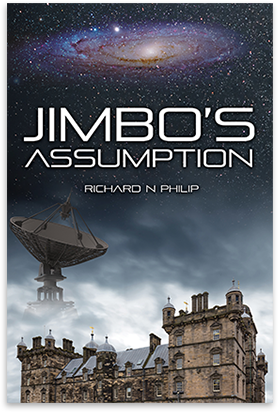
Ole Rømer
Frequently used metaphorically, light has preoccupied our
species for millennia. Light and darkness have commonly represented good and
evil. Joy and sorrow. Francis Bacon’s purported opinion was that “in order for
the light to shine so brightly, darkness must be present”. Allegorical: symbols
representing intangible notions. Knowledge and ignorance are another pairing.
It’s no coincidence that a recent period of philosophical awakening is named
the Enlightenment.
Before then, though, scientists pondered the physical nature
of light. Aristotle’s writings remained influential for centuries.
Researchers of a later era studied optics in the Middle
East. Alhazen’s massive Book of Optics, written one-thousand years ago in
Cairo, advanced the field from abstractions to an experimental science. For
this, he earned the epithet, Father of Optics.
The pace of discovery picked up with the introduction of the
telescope early in the 17th century. Light, optics, and
astronomy, conjoined. Galileo and Thomas Harriot were early practitioners,
producing lunar maps. Galileo also detected the first four of Jupiter’s many
moons. He wondered whether these might be used as a clock.
Similar thoughts resurfaced later in the century.
Potentially helpful to navigators, it was imagined. In Paris, the director of
the new Royal Observatory was Italian-born astronomer, Gian Domenico Cassini,
who studied the question but found puzzling discrepancies.
Here, Ole Rømer enters the narrative. A highly regarded
junior colleague, in 1672 CE the young Dane arrived in Paris after
participating in a French Academy expedition focussed on geodesy, to validate
Isaac Newton’s theoretical assertions concerning the oblateness of Earth.
Election to the Academy, aged 28, was one result of Rømer’s contributions. He
quickly became intrigued by the inconsistencies noted by Cassini.
Rømer realised that the apparent frequency of Io’s eclipses
varied with the positional relationship of Earth and Jupiter. As the distance
increased, so the eclipse was seemingly delayed. In 1676 CE, he informed the
Academy that a forthcoming eclipse would be ten minutes late. Regarded as
absurd by members who believed light was propagated instantaneously, Rømer was
correct. When Io is more distant, information embedded in the light reaches
Earth later. Light has a finite velocity.
Acclaim was not immediately forthcoming. Cassini possessed
reservations: scrutiny of Jupiter’s other moons did not support the phenomenon
but, as Rømer argued, accurate observation and measurement was more difficult
than for the proximate Io. The Dutch polymath, Christiaan Huygens, favoured
Rømer’s deduction, but neither offered a rigorous calculation of light’s
velocity. Revealing a universal constant was the triumph.
British advocates were evident. The young Edmund Halley was
enthusiastic. Newton sympathised with Rømer’s conclusion. In Opticks,
published in 1704 CE, he assessed the time required for light emanating from
the Sun to reach Earth at circa seven minutes. A good estimate for the era.
Before then, Rømer had returned home. Once back in Denmark,
still relatively young and energetic, he was appointed Royal Astronomer,
directing activities at the observatory. For another three decades, he
invigorated Danish society with diverse contributions: a temperature scale,
weights & measures, and schools for navigators were his legacy.
Uncovering light’s nature is his monument.
Post Views : 44